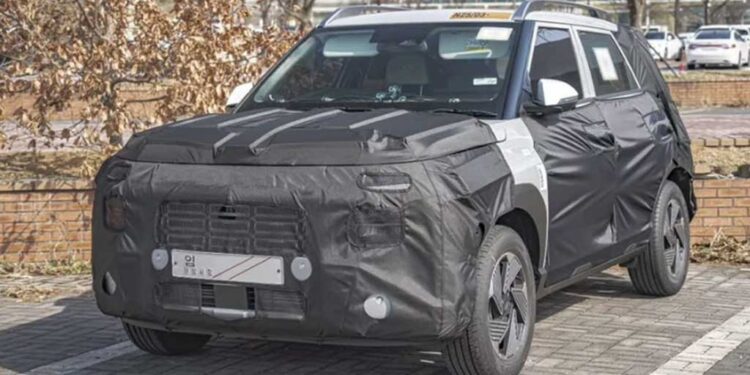Launch Date (Expected): November 4, 2025
Codename: QU2i
Estimated Price Range (India): ₹7.9 lakh to ₹14.0 lakh (ex-showroom)
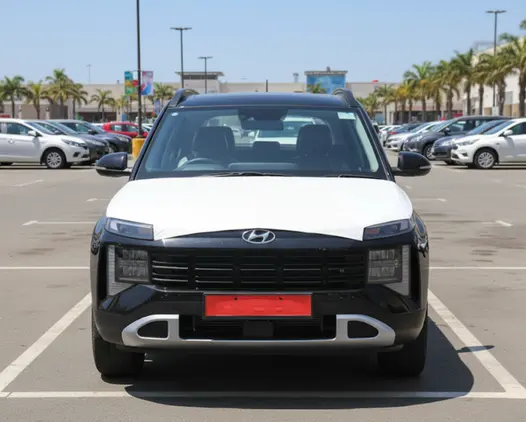
New-Gen Hyundai Venue 2025 Hyundai’s upcoming second-generation Venue is shaping up to be a strong statement in India’s compact SUV segment. With a major design overhaul, richer features, and modern safety tech, it aims to stand out among fierce rivals. Below is a forward-looking preview based on recent credible reports and spy imagery.
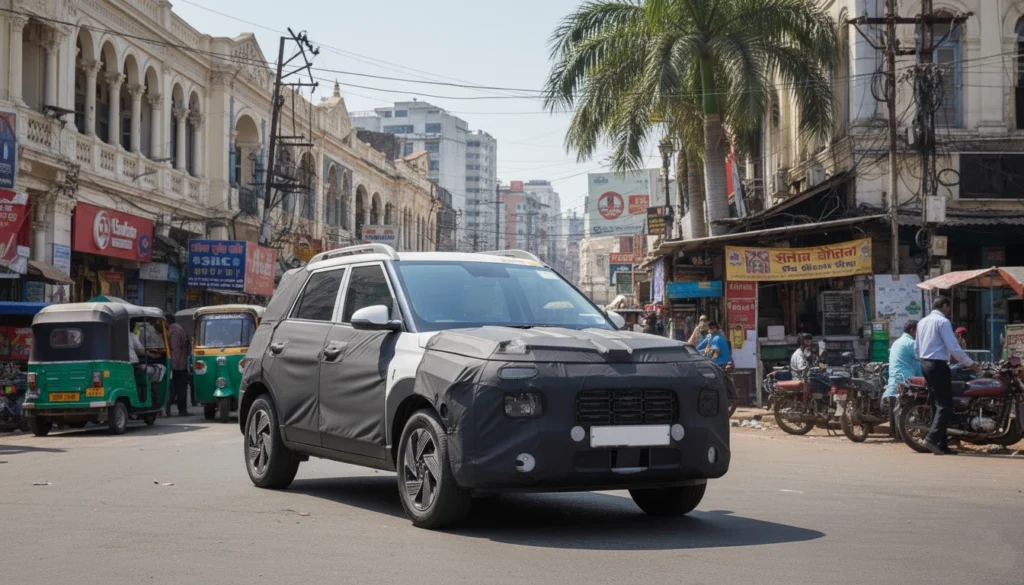
1. Exterior: A More Muscular, Modern Identity
While the new Venue retains its compact proportions and upright SUV character, the design direction is significantly bolder:
- Headlamps & DRLs: The front fascia is expected to adopt a split-LED layout. Vertically stacked projector lamps paired with C-shaped LED DRLs give it a sharper, layered appearance.
- Grille & Front Fascia: The grille moves away from mesh styling toward horizontal slats / rectangular inserts, lending a stronger face. New bumper contours and sharper lines enhance its aggressive presence.
- Side Profile: Spy images suggest upgraded 16-inch alloy wheels (possibly diamond-cut design), pronounced wheel arches, thicker cladding around the doors, sleeker wing mirrors, and functional roof rails. The body surfaces appear cleaner, with fewer creases but more purposeful surfacing.
- Rear Design: One of the most talked-about changes is the connected LED tail-lamp bar, which runs the width of the tailgate, delivering a premium, modern look. The tailgate and bumper are reconfigured — integrated reflectors, updated diffuser-style lower section, and an improved roof spoiler enhance aesthetics and utility.
The new Venue’s styling appears inspired by Hyundai’s bigger SUVs (Creta / Alcazar), marrying boldness with compact efficiency.
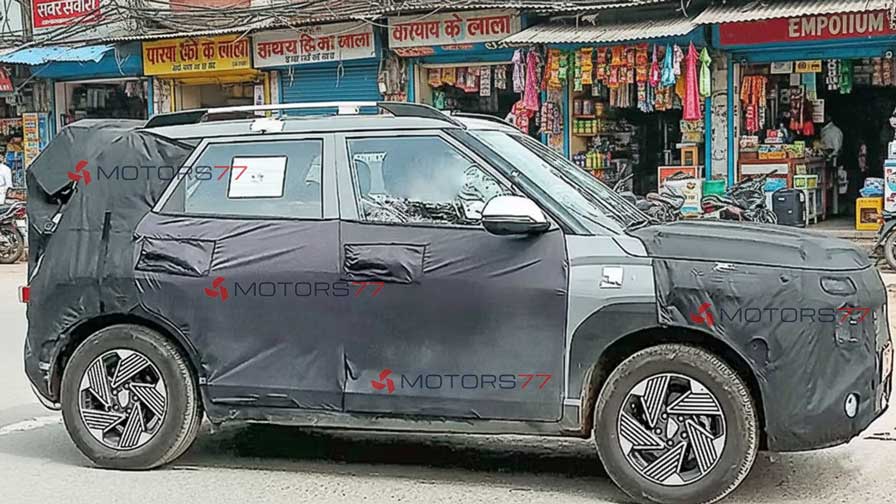
2. Cabin & Comfort: Tech-Driven, Premium Feel
Inside, the upgrades aim to elevate the Venue from “affordable compact SUV” to “premium compact experience”:
- Dual-Screen Configuration: Reports and leaked images suggest a curved, unified display setting combining a digital instrument cluster and a 10.25-inch (or larger) touchscreen infotainment unit. This layout offers a modern, flowing visual experience.
- Dashboard & Controls: Expect a revised dashboard with slimmer AC vents, modern switchgear, ambient lighting strips, and a freshly designed steering wheel. Controls will likely be more intuitive, with a cleaner layout.
- Seating & Comfort: Higher trims might include ventilated front seats, while seats in general could feature new dual-tone upholstery, improved cushioning, and better lumbar support.
- Sunroof & Utility: A panoramic sunroof may find its way into the spec sheet. Additionally, wireless charging, multiple USB-C ports, and possibly a dashboard-mounted speaker (for ambient audio) have been speculated.
- Materials & Quality: There is a strong push toward more soft-touch surfaces, padded armrests, and better finishing materials across key touchpoints (knees, door pads, consoles).
While not all these features are officially confirmed, the direction is clear: Hyundai wants the Venue to feel grown up from the inside.

3. Powertrain & Drive: Continuity With Upgrades
Hyundai is likely to stay with its proven engine lineup, refined for better performance and efficiency:
- 1.2 L Naturally Aspirated Petrol: This engine, already in use, is expected to remain a reliable base option.
- 1.0 L Turbo Petrol: The performance pick, delivering punchier output and suited for daily usability.
- 1.5 L Diesel: While diesel is becoming less common, this engine is expected to continue in select variants.
Transmission Options are expected to include:
- 5- or 6-speed Manual
- 6-speed iMT (clutchless manual) in select trims
- 7-speed Dual-Clutch (DCT) for the turbo version
- Possibly a 6-speed automatic (torque-converter) in select versions
Recent testing and spy reports show DCT badging on test mules, four-wheel disc brakes in some versions (as seen in N Line variants), and strong indications of all three engines being retained.
In short: no radical change in the powertrain, but refinement and better integration with features like ADAS are expected.
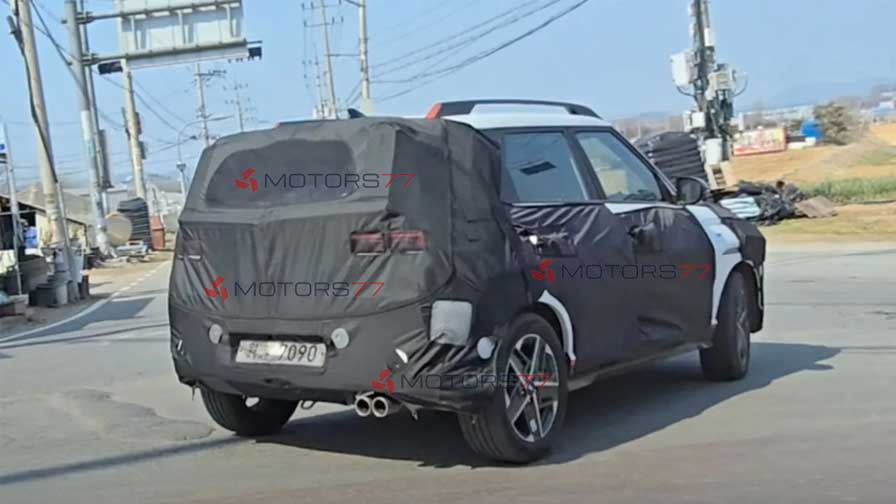
4. Safety & Driver Assistance: A Big Step Up
The new Venue is expected to deliver a segment-leading safety and ADAS package, pushing toward higher standards:
- Level 2 ADAS Suite: Top trims could come equipped with adaptive cruise control, lane keeping assist, forward collision warning & avoidance, blind-spot monitoring, and rear cross-traffic alert.
- Standard Safety Kit: Expect six airbags, electronic stability control (ESC), hill-start assist, ABS with EBD, and 360° surround-view camera (or multi-angle parking cameras).
- Parking & Driver Aids: Front and rear parking sensors, possibly automated parking or park assist in higher variants.
- Connectivity & OTA: Hyundai’s connected-car technology (like BlueLink) is likely to support over-the-air updates, remote diagnostics, live vehicle health via app, and voice commands.
These features aim to make the new Venue safer and smarter than many rivals at this price point.
5. Price & Variants: Striking the Value Balance
Hyundai plans to offer the new Venue in multiple trim levels, possibly including standard and N Line variants:
- Base Price Estimate: Around ₹7.9 lakh (ex-showroom)
- Top-End Estimate: Up to ₹14.0 lakh (ex-showroom)
- N Line Version: Expected premium over standard trims, with sportier styling, chassis tweaks, and performance upgrades.
While exact variant names are not officially confirmed, names such as E, S, SX, SX(O) are widely speculated in the automotive media. The price jump compared to the current Venue is justified by the extensive feature and design enhancements.
6. Competition & Market Positioning
In the compact SUV space, the new Venue will compete fiercely against:
- Maruti Brezza / Brezza Facelift
- Kia Sonet
- Tata Nexon
- Mahindra XUV 3XO
- Skoda Klayq / Skoda-backed alternatives
- Renault Kiger / Nissan Magnite
Its advantages are likely to include Hyundai’s wide service network, a fresh and bold design with strong brand appeal, and a rich safety-tech package. For buyers looking for a modern compact SUV with premium touches, the 2025 Venue could become a go-to choice.
7. What to Watch Post-Launch
Once Hyundai delivers the official specification sheet, watch for:
- Real-world fuel efficiency (city / highway)
- Variant-wise feature distribution (which trim gets ADAS, sunroof, ventilated seats, etc.)
- Pricing across regions and states (after local taxes)
- Customer responses on performance, ride & handling, and long-term reliability
- Comparisons in resale value versus rivals.
Final Note
The new-gen Hyundai Venue is poised to raise the bar in India’s compact SUV segment. With its bold design, modern interior tech, and advanced safety offerings, it could reset expectations for what buyers expect in this class. While there are still a few unknowns, everything points toward a confident, competitive relaunch.

